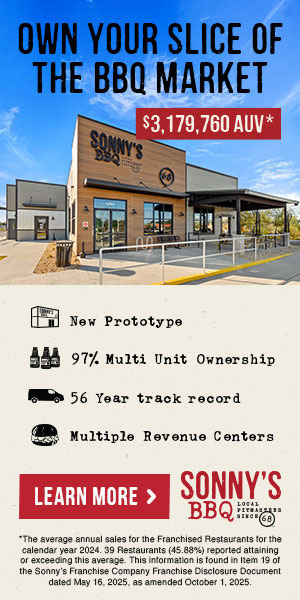When Faced with a Customer Complaint Train Your Team To Do the "LEAST"

Here’s a test: Ask five employees what they would do if they encountered an upset customer. I guarantee you will get five different answers. However, you want one consistent answer, the one you’ve trained them to provide. All your employees must know how to properly react and handle a situation when a customer is inconvenienced and potentially upset.
The key is that training must be easy to remember, effective, and easy to implement. I have seen dozens of different protocols. My favorite, easy and effective, is the acronym “LEAST.”
Listen. Give your customer your complete attention. Listen for the real reason the customer is unhappy. Never interrupt. Keep eye contact and nod as the customer speaks.
Empathize. Do your best to relate to your customer’s feelings by putting yourself in their shoes (disappointed, frustrated, hurt, angry).
Apologize. Let the customer know how genuinely sorry you are. Never make the customer wrong. Speak softly.
Solve. Do your best to solve the problem right there on the spot and make them happy. Take personal responsibility for solving the problem and advocate for the customer. Be 100% positive the customer is completely satisfied.
Thank. Thank the customer for bringing the issue to your attention and allowing you to make it right. Thank them for their patience and for being a loyal customer.
What’s happened to business phone numbers?
Years ago, a study revealed that customers would rather go to the dentist instead of calling a company’s contact center. Big corporations have now solved that issue by making it virtually impossible to contact them by phone.
A new study sheds light on a significant obstacle: The absence of a contact phone number on the homepage of 85% of Fortune 500 companies and the complete omission of such a number on 23% of their websites. According to one study, 76% of customers still prefer phone calls for customer support, yet it took researchers six or seven clicks to find a phone number on the websites they examined.
Further, VoiceNation’s customer service data analysis revealed that 33% of the leading Fortune 500 companies are unreachable. This tactic creates overwhelming barriers for consumers, forcing many to seek other means of recourse.
Most customers do not want to complain. Besides being uncomfortable doing so, it is considered a waste of time. Now it appears closer to impossible to do so. One of the few places frustrated consumers can force companies to respond is the internet.
Social media and sites like Yelp have become a stage for airing grievances about customer service, typically when all other avenues have failed and frustration peaks. Companies often respond to these issues only when they gain traction online and spark a collective demand for action, with acknowledgments typically made in a public forum. This reaction underscores the performative and insincere attitude of certain businesses that value customer satisfaction only when it affects their public image.
And, as more companies incorporate artificial intelligence and machine learning to improve productivity and efficiency, this must be done in collaboration with having employees available for those who still wish to speak to a real person.
Are you getting enough complaints?
Think about the last time you had a disappointing experience as a customer. Did you tell anyone at the company? You left the business feeling frustrated, or you hung up the phone more stressed than before you called. If you are like most people, you don’t bother to waste your time sharing your displeasure with anyone at the business that disappointed you in the first place.
Why? Most customers don’t think anyone cares, that no one really wants to hear about their problem, or perhaps they will think you are trying to get away with something. So why would a customer wish to waste their time?
How often does this play out in your business? Do customers leave unhappy without letting anyone know?
If we are not making it easy for our customers to give feedback, then it is happening to us more than we realize. Our customers have better things to do with their time than hunt us down, wait forever to complain or ask a question, and then feel that it didn’t make a difference.
Make it easy for customers to share
Help your customers to communicate quickly in a non-threatening way, not only enabling them but also asking for their advice and feedback, both positive and negative. Few companies ask their customers for praise and lose the opportunity to celebrate and perpetuate outstanding performance.
However, even fewer companies dare to ask their customers for feedback if their experience is below what they expected. It is so simple. It is just marketing to your customer on everything: invoices, orders, emails, at checkout, on the website, and even in restrooms. Here are some examples of what companies have used effectively.
“Please tell us about your experience. We need to know how we are doing.”
“We want your advice on how we can be better.”
“Did we hit the mark today? Tell us. Did we miss it? Tell us, please!”
“Was someone a hero for you today? We want to recognize them.”
“Were we the best part of your day? If you can’t answer yes, we need to know why.”
Is your company zero risk?
Zero risk doesn’t mean your organization never drops the ball. Zero risk means that when the ball is dropped, your employees handle it appropriately and make it right with the customer. The customer may now be more loyal than they would have been had everything gone as expected. There are four key parts to being a zero risk company:
- Have a specific response protocol that all employees are trained to use for customer challenges.
- Know where your company drops the ball most often.
- Have systems and processes in place to reduce issues from happening.
- Have a service recovery system and tools that your employees can use to make it right when it does happen.
John R. DiJulius III, author of The Customer Service Revolution, is president of The DiJulius Group, a customer service consulting firm that works with companies including Starbucks, Chick-fil-A, Ritz-Carlton, Nestle, PwC, Lexus, and many more. Contact him at 216-839-1430 or [email protected].
Share this Feature
Recommended Reading:
| ADVERTISE | SPONSORED CONTENT |
FRANCHISE TOPICS
- Multi-Unit Franchising
- Get Started in Franchising
- Franchise Growth
- Franchise Operations
- Open New Units
- Franchise Leadership
- Franchise Marketing
- Technology
- Franchise Law
- Franchise Awards
- Franchise Rankings
- Franchise Trends
- Franchise Development
- Featured Franchise Stories
| ADVERTISE | SPONSORED CONTENT |

$50,000
$400,000





 The multi-unit franchise opportunities listed above are not related to or endorsed by Multi-Unit Franchisee or Franchise Update Media Group. We are not engaged in, supporting, or endorsing any specific franchise, business opportunity, company or individual. No statement in this site is to be construed as a recommendation. We encourage prospective franchise buyers to perform extensive due diligence when considering a franchise opportunity.
The multi-unit franchise opportunities listed above are not related to or endorsed by Multi-Unit Franchisee or Franchise Update Media Group. We are not engaged in, supporting, or endorsing any specific franchise, business opportunity, company or individual. No statement in this site is to be construed as a recommendation. We encourage prospective franchise buyers to perform extensive due diligence when considering a franchise opportunity.